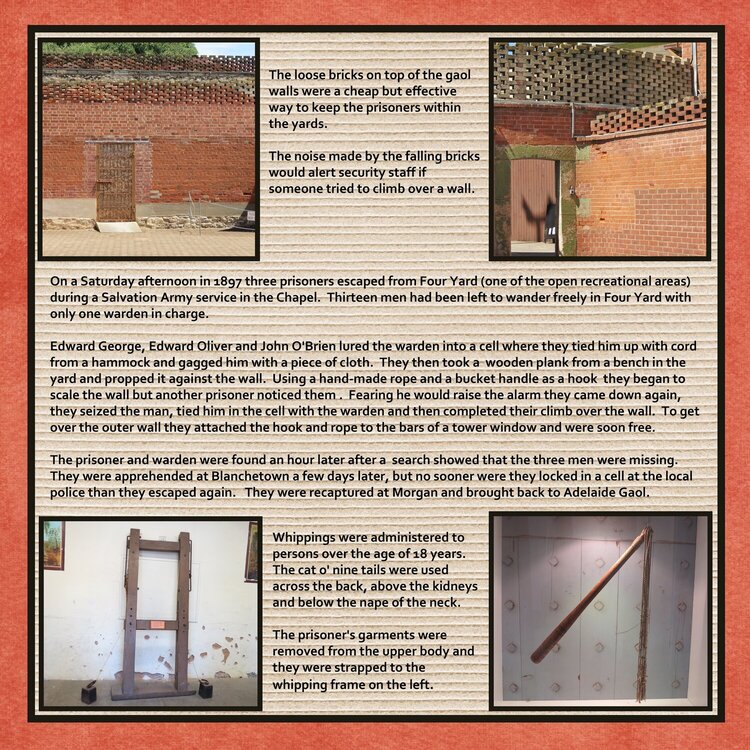

 Give a Cheer
Give a Cheer
The loose bricks on top of the gaol walls were a cheap but effective way to keep the prisoners within the yards.
The noise made by the falling bricks would alert security staff if someone tried to climb over a wall.
On a Saturday afternoon in 1897 three prisoners escaped from Four Yard (one of the open recreational areas) during a Salvation Army service in the Chapel. Thirteen men had been left to wander freely in Four Yard with only one warden in charge.
Edward George, Edward Oliver and John O'Brien lured the warden into a cell where they tied him up with cord from a hammock and gagged him with a piece of cloth. They then took a wooden plank from a bench in the yard and propped it against the wall. Using a hand-made rope and a bucket handle as a hook they began to scale the wall but another prisoner noticed them . Fearing he would raise the alarm they came down again, they seized the man, tied him in the cell with the warden and then completed their climb over the wall. To get over the outer wall they attached the hook and rope to the bars of a tower window and were soon free.
The prisoner and warden were found an hour later after a search showed that the three men were missing. They were apprehended at Blanchetown a few days later, but no sooner were they locked in a cell at the local police than they escaped again. They were recaptured at Morgan and brought back to Adelaide Gaol.
Whippings were administered to persons over the age of 18 years. The cat o' nine tails were used across the back, above the kidneys and below the nape of the neck.
The prisoner's garments were removed from the upper body and they were strapped to the whipping frame on the left.
No products have been added to this project.
Thanks for spreading positivity!
July 03, 2015
July 01, 2015
July 01, 2015
June 28, 2015
June 26, 2015
June 25, 2015